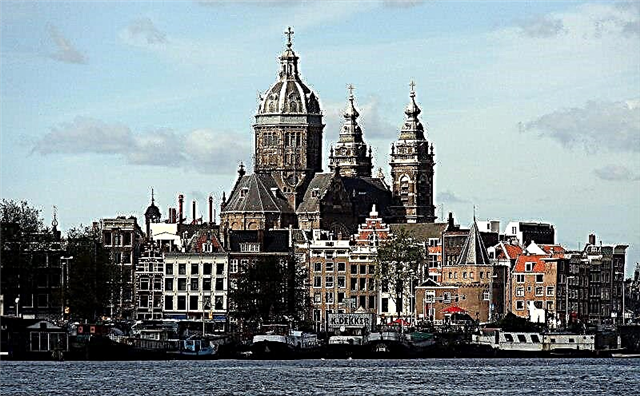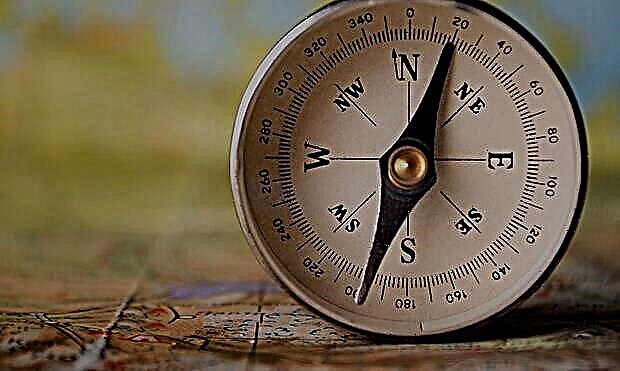Address: Niagara Falls, USA, Niagara Falls, Canada, on the Niagara River
Height: 53 m
Width: 792 m
Coordinates: 43 ° 04'38.2 "N 79 ° 04'29.1" W
Content:
Short description
On the border of the United States and Canada, between Lakes Erie and Ontario, in the place where the Niagara River smoothly approaches the threshold, there is a massive Niagara Falls, throwing huge streams of water from a height of a 20-story building. Niagara Falls consists of three waterfalls, united for simplicity by a common name: "Canadian" (aka "Horseshoe"), "American" and "Bridal Veil" Falls.

View of Niagara Falls from the Skylon Tower
It is better to admire this miracle of nature from the Canadian side, where you can almost come close to the "Horseshoe", the ridge of which stretches for 670 meters, and the water falls into the abyss from a 57-meter ledge. A few hundred meters below Niagara is crossed by the "Rainbow Bridge", intended for road and pedestrian traffic between the two countries.
Stunning views of the rainbow open up over the bridge: it appears in clear weather, when the sun's rays, intersecting with splashes, are refracted. Niagara Falls acquired its sonorous name thanks to the Indian tribes who called it "Onguiaahra", which in translation from the Iroquois language means "Thunder of water"... Even at a distance of many kilometers, the noise of a waterfall is heard and a "water cloud" hanging over it, enveloped in myriads of splashes, is visible.

View of the waterfall from Canada
Niagara Falls - a creation of nature
The history of Niagara Falls is 12 thousand years old. The reason for the formation of the Niagara River and the Great Lakes was the Wisconsin Glacier, moving from the territory of eastern Canada. Like a powerful tractor, the ice layer tamped down the soil and rocks, created new riverbeds and filled up old ones.
After the melting of the glacier, Niagara, having stumbled upon dolomite rocks, began to destroy them, and from the northern bank, the river washed out sea stones, forming a gorge and a cliff. Soil erosion continues today, so Niagara Falls moves upstream by 1 meter every year. Scientists predict that in 20 thousand years it will reach Lake Erie and dissolve in the waters of Ontario.

Niagara Falls legend and history
Niagara Falls is steeped in romantic legend. It says that they wanted to marry the lovely girl Lelavalae to her fellow tribesman, whom she despised. To avoid such a fate, the beauty decided to sacrifice herself to the god of thunder He-No. She threw herself down from the ledge of the waterfall, but He-No caught her on the fly, and since then their souls have been living in one of the gorges of Niagara. According to the official history, the first European to see and describe Niagara Falls was the Catholic priest Louis Annnepenwho traveled through the area in 1677.

View of the waterfall from the Rainbow Bridge. Left, observation tower
Niagara Falls Tours & Activities
As the most powerful waterfall in North America, Water Thunder attracts up to 12 million tourists annually. Hotel complexes have been erected on both sides of the river. You can enjoy the spectacle of falling water not only from the shore, but also from the windows of hotels, during boat trips or helicopter tours. Travelers will also be offered to climb to the observation deck of the 236-meter Skylon tower, fly over Niagara in a hot air balloon or go down to the Cave of the Winds, at the foot of the Fata waterfall. And of course, the night illumination and fireworks display at Niagara Falls is impossible to miss. Most people simply admire what they see, but there are brave men who want to conquer the water element.

Road to the Cave of Winds on the US side
Extreme fun at Niagara Falls
Since the end of the 19th century, extreme fun has been widespread at Niagara Falls - descent in barrels. In 1901, American teacher Annie Taylor became the first person in the world to overcome a waterfall in a wooden barrel and survive. The "record holder" escaped with only a small wound on her head. Extremists survived with serious injuries. Often, such an adventure ended with the death of a daredevil. Only one man, stuntman Steve Trotter, who survived the deadly stunt, had the guts to jump again. In 1985, Steve Trotter went down Niagara Falls for the first time in a barrel, but he took the courage for a second attempt for 10 years before successfully repeating the “barrel fall”.

View of the waterfall from the observation tower
Niagara Falls in winter
Niagara is beautiful not only in summer but also in winter. In the cold, the stream continues to overwhelm, and the frozen water at the foot of the waterfall forms gigantic icicles, sparkling and shimmering in the rays of sunlight. It is difficult to imagine that Niagara Falls, every second falling from its ledge 5,900 cubic meters of water, could stop. However, this happened twice - in 1848 and 1911. In the winter of 1848, the weather was so severe that the ice blocks of Lake Erie blocked the source of Niagara, and the waterfall stopped rumbling. Residents, who did not understand the reasons for what happened, were seriously alarmed, expecting anything, right up to the end of the world. But a day later, the water broke through the ice barrier and rushed down, breaking huge ice floes with a crash and a roar, disappearing into the abyss.











